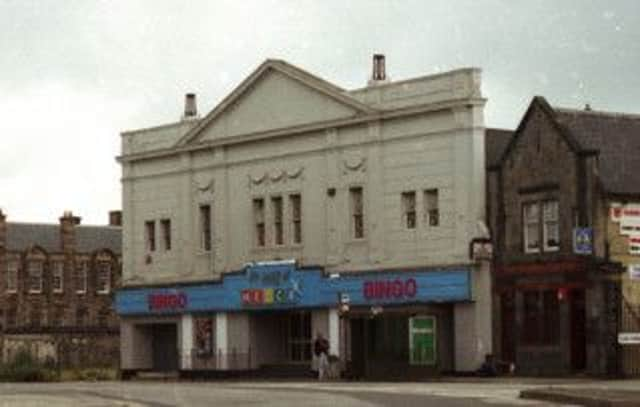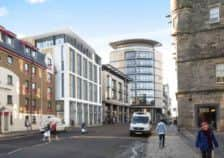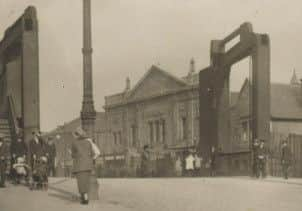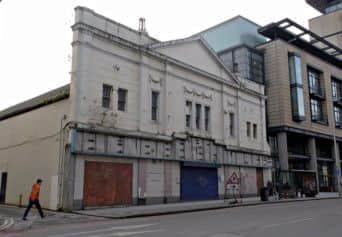Lost Edinburgh: The Palais de Danse


The Palais de Danse wasn’t always the realm of ballroom aficionados. It began life as a very different type of establishment on 26 November 1909 when it opened as The Grand Skating Rink – the longest roller skating rink in Edinburgh. Skating rinks were all the rage at this time, with the capital boasting several, at locations such as Marine Gardens, Annandale Street and Russell Road.
Built on the site of the Hopetoun Iron Foundry, the roller skating rink on West Fountainbridge was a big hit in an area where pubs once offered the sole means of entertainment. Its large hall was also used for dancing which took place exclusively on Tuesday and Friday evenings – a hint at what would one day define the venue.
Advertisement
Hide AdSkating on this site didn’t last very long. On 14 December 1911 the Grand Rink was converted and reopened as The Coliseum picture house. Billed as ‘The finest and largest picture hall in Edinburgh’,


The Coliseum was a cine-ballroom complex with seating for 1,800 and regularly featured the latest flicks from the likes of Charlie Chaplin.
Dancing returned to the venue in style on Hogmanay 1920 as the inaugural Grand New Year’s Ball of the new Palais de Danse, ‘Scotland’s most exclusive ballroom and social rendezvous’, got underway.
The cinema, renamed The New Coliseum, continued alongside the Palais until 1942.
In its early days the Palais, with its handsome classical frontage, was considered the most upmarket dance hall in the city, and was visited by the Duke of Windsor and the Duke of Kent, among other swanky luminaries.


Heyday
From the 1930s onwards the Palais de Danse flourished to become one of the most popular haunts in the city. On a good night up to 900 people would cavort the night away on its enormous sprung dancefloor. The great novelty was the hand-cranked revolving stage, which allowed bands to seamlessly swap over, without any hint of an interruption to the dancing. There were no alcoholic drinks – the ‘cocktail bar’, Cupid’s Corner, served only fruit juice. Local lads hoping to impress the girls with their jiving had stiff competition from American Air Force personnel who were stationed at Kirknewton in West Lothian during the 1950s. Over the years, countless
Advertisement
Hide Admarriages were forged from couples meeting at the Palais de Danse.
During the 1960s, the venue was even used by the BBC for their long-running Come Dancing series – a distant ancestor of the hugely-successful Strictly Come Dancing.


Link to Sean Connery
Advertisement
Hide AdThe Palais is often associated with Fountainbridge’s most famous son, Sean Connery, who worked there as a bouncer and even trained for a career as a bodybuilder in the backstage area (presumably when off-duty).
Legend also has it that Sir Sean frequently contravened the Palais’ strict doorman dress code. Each evening, the future 007 would swiftly shed his bow tie. Perhaps Big Tam didn’t want to look like a bit of a softy should Tollcross’s notoriously violent Valdor gang turn up – a common occurrence according to those who used the venue regularly.
Demise and redevelopment proposals
In 1967 the ever-popular Palais de Danse was closed by its owners, Mecca, for refurbishment. Sadly, it would never reopen for its most celebrated purpose due to alleged structural problems. The building lay disused for a number of years before embarking on a new lease of life as a bingo hall. It continued in this vein until 2006 when Mecca Bingo upped sticks to nearby Fountainpark. The unlisted Palais de Danse has stood precariously ever since closure with fire having ravaged its interior on more than one occasion.
In February 2015 plans were published revealing a pre-application to build student accommodation on the site with the decaying dancehall proposed for demolition.
Despite the neglected state of its façade, the Palais de Danse still holds a reserved spot in the hearts of those who can recall its heyday. It was a place where couples would first meet and, in later years, return to share a dance as husband and wife. For many Edinburgh locals, whether too young to remember the venue or not, the Palais could very well be the reason they’re here in the first place.
• David McLean is the founder of the Lost Edinburgh Facebook page